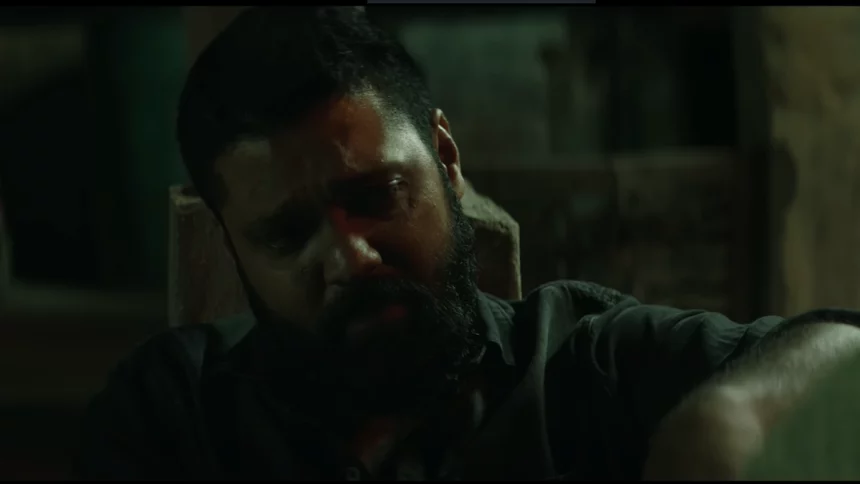In Sapta Sagaradaache Ello (Side A) directed by Hemanth M Rao, Manu (played by Rakshit Shetty) and Priya (Rukmini Vasanth) were unbreakable. They are still at the center of Sapta Sagaradaache Ello(Side B), the sequel of the two-part relationship drama, even though Manu is the one telling us their story. Although Priya is a sympathetic character in the story, we don’t witness her responding to her situation the way she did in SSE (Side A).
This strategy helps to justify the film’s gloomy tone, and as we follow the plot, which holds few surprises, we are also more or less ready for the inevitable impending catastrophe. Manu is released from prison ten years after his rash decision ended his relationship with Priya and landed him in jail. He is not, however, at all free. Manu has little room or light in his home, which makes it seem like a prison. Manu’s incessant thoughts of Priya enslave him.
Sapta Sagaradaache Ello(Side B)
Managed by: Hemanth M. Rao
Cast: Achyuth Kumar, Ramesh Indira, Rukmini Vasanth, Chaithra J. Achar, and Rakshit Shetty
Runtime: 147 minutes
Story: Manu attempts to start over after being freed from prison for ten years. But Priya’s memories continue to pain him. Will he see her once more?

- Advertisement -
Manu starts to develop feelings for sex worker Surabhi (Chaithra J Achar). She looks like her, which is why he is drawn to her. Otherwise, Surabhi and Priya couldn’t be more different. The former finds the sea to be sticky and humid, while the latter finds it to be therapeutic. Surabhi appears to be Priya, but Manu may or may not be aware of the fact that she is distant from her.
Priya has a son and is married. The story begins when Manu chooses to see her one last time before choosing to move on. The traditional storytelling approach was replaced by Hemanth’s back-and-forth narration. He manipulates the emotions of the audience by doing that. They lament reality by speculating about what might have occurred if Manu and Priya had gotten together. Manu doesn’t even find out about Priya’s life from the horse’s mouth. Hemanth tells the story by cutting back and forth between Manu’s meetings with her husband Deepak and her conversations with her brother.
Is it possible for the story to continue without Priya’s husband being a moron? Isn’t it inevitable that Manu would eventually live with Surabhi? Yes and no, according to Hemanth. The plot stays somewhat simple, but by showing his characters a vulnerable side. The director subverts the clichés of a tragic love story. The dialogue has a delightfully abrupt quality and a hint of sarcasm, making it feel like you’re watching a Mani Ratnam movie.
As with all Hemanth films, the execution steals the show from the easy writing (Hemanth co-wrote the story with Gundu Shetty). The cinematography of Advaitha delves deeply into Bengaluru’s underbelly. Manu’s life is about to take a drastic turn, and the dismal settings and stark color palette convey the fallout from his one rash choice. If Charan Raj made us feel depressed in SSE (Side A), the composer’s music makes us nervous in SSE Side B.
Talking more about the character and story of SSE (Side B)
SSE Side B is Hemanth’s in-depth examination of Manu’s character. Manu wanted Priya to sing for the rest of her life and have a house by the sea. And the movie depicts the lengths he goes to in order to make that happen. Manu is flawed and morally wrong, and Hemanth has no qualms about mirroring such a personality. However, he treads carefully when doing so, being careful not to glorify Manu’s doing. For example, Manu relentlessly stalks Priya, but the camera primarily focuses on his eyes to convey his despair. Or he is shown in a long shot as if he is more of an observer than a person. Even Manu’s inflexibility to never forget Priya feels like a nod to the legendary Devdas, though Hemanth doesn’t exploit that.
One wishes the film deeply penetrates Priya’s mind. We’re not sure if she retains any memories of Manu outside of her routine life. The relationship between Surabhi and Manu ought to have blossomed more in the movie. Surabhi’s tough exterior hides her tender heart and desires. Chaithra does a fantastic job portraying the character in a playful green. Despite the characters’ lack of originality, Ramesh Indira’s villainous act and Gopalakrishna Deshpande’s performance are outstanding.
The performance by Rakshit Shetty is the best of his career. He has a scarred face, gloomy eyes, and a beefed-up demeanor that befits someone who experienced heartbreak ten years ago. In the end, he never loses sight of the essence of his character to become a “mass” hero, even during the aesthetically pleasingly realistic fight scene.
Like its predecessor, Sapta Sagaradaache Ello(Side B) places greater emphasis on the process than the outcome. There was a strong sense of the inevitable outcome. However, if you follow the characters on their entire journey, this is a love story that will stick with you for a very long time.


